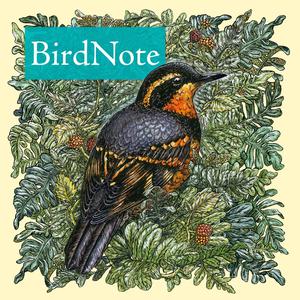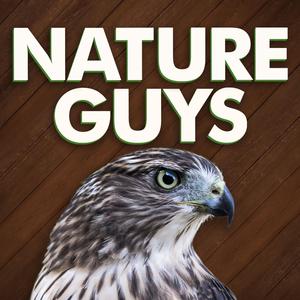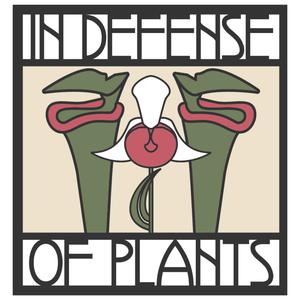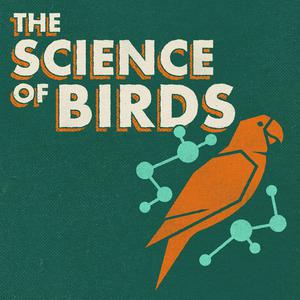
BirdNote Daily
BirdNote
Escape the daily grind and immerse yourself in the natural world. Rich in imagery, sound, and information, BirdNote inspires you to notice the world around you. Join us for daily two-minute stories about birds, the environment, and more.
- 1 minute 45 secondsSwallow-tailed Kite
A bird of prey in the American Southeast takes grace to an utterly new level. It's the Swallow-tailed Kite. A sleek raptor with a deeply forked tail, the Swallow-tailed Kite almost never flaps its wings. The bird makes sudden tight turns, upside-down moves, and quick backward dives, all by pivoting and moving its tail. Kites snatch insects out of the air and take lizards and snakes off leaves with their talons. Then they transfer prey from their talons to their hooked beaks, all while on the wing.
More info and transcript at BirdNote.org.
Want more BirdNote? Subscribe to our weekly newsletter. Sign up for BirdNote+ to get ad-free listening and other perks.
BirdNote is a nonprofit. Your tax-deductible gift makes these shows possible.
5 May 2024, 7:00 am - 1 minute 41 secondsGulls or 'Seagulls'?
Gulls seem so much a part of the sea that we often just call them "seagulls," a colloquial title for these graceful, ubiquitous creatures. Twenty-two species breed in North America. The Pacific coast is home to the aptly named Western Gulls. The familiar Ring-billed Gull nests all across the northern states and Canadian provinces. Herring Gulls breed along the Great Lakes and Northeast waterways, while these Laughing Gulls nest all along the Atlantic and Gulf coasts.
More info and transcript at BirdNote.org.
Want more BirdNote? Subscribe to our weekly newsletter. Sign up for BirdNote+ to get ad-free listening and other perks.
BirdNote is a nonprofit. Your tax-deductible gift makes these shows possible.
4 May 2024, 7:00 am - 1 minute 45 secondsDo Parrots Name Their Chicks?
Parrots are among the smartest of birds. But are they clever enough to know each other by name? Research conducted by ornithologist Karl Berg suggests the answer might be yes. Berg’s studies of Green-rumped Parrotlets — such as the one pictured here — indicate that every parrot in a family flock has a distinct vocal signature learned from its parents. When others in the flock hear it, they know precisely who’s calling.
More info and transcript at BirdNote.org.
Want more BirdNote? Subscribe to our weekly newsletter. Sign up for BirdNote+ to get ad-free listening and other perks.
BirdNote is a nonprofit. Your tax-deductible gift makes these shows possible.
3 May 2024, 7:00 am - 1 minute 41 secondsSpring Birds Arrive in the Eastern Forest
May in an Eastern hardwood forest, and the chorus of spring birdsong is nearing its peak. The Carolina Wren, a year-round resident, has been singing since the end of winter. The resounding notes of this Ovenbird let us know it has returned safely from Belize, after a long flight across the Gulf of Mexico. A Chestnut-sided Warbler joins in, having returned from winter in Costa Rica, to the same patch of woods in which it nested last year. By late May, the last of the migrants has arrived from the tropics.
More info and transcript at BirdNote.org.
Want more BirdNote? Subscribe to our weekly newsletter. Sign up for BirdNote+ to get ad-free listening and other perks.
BirdNote is a nonprofit. Your tax-deductible gift makes these shows possible.
2 May 2024, 7:00 am - 12 minutes 17 secondsCraig Santos Perez and the Last Safe Habitat
Poet Craig Santos Perez grew up on the island of Guam, and later moved to Hawai‘i where his children were born. Both are places that once flourished with unique and diverse bird life, but because of invasive species and climate change, have seen so much loss and extinction. In this episode, he shares poetry that explores his relationship with lost and endangered wildlife and that reflects on the future his daughter will inherit.
More info and transcript at BirdNote.org.
Want more BirdNote? Subscribe to our weekly newsletter. Sign up for BirdNote+ to get ad-free listening and other perks.
BirdNote is a nonprofit. Your tax-deductible gift makes these shows possible.
1 May 2024, 7:00 am - 1 minute 45 secondsBirdNoir: The Wild Tom Turkey
In this episode of BirdNoir, the private eye gets a call from H. Jon Benjamin about unusual Wild Turkey behavior. A male turkey (known as a “tom”) won’t leave his car alone. He keeps tapping his beak on the car. Then the turkey starts circling the house and looking in all the windows. The private eye reveals how things look from the turkey’s perspective, which points the way to a possible solution.
More info and transcript at BirdNote.org.
Want more BirdNote? Subscribe to our weekly newsletter. Sign up for BirdNote+ to get ad-free listening and other perks.
BirdNote is a nonprofit. Your tax-deductible gift makes these shows possible.
30 April 2024, 7:00 am - 1 minute 45 secondsBirding 101: Finding Birds Any Time of Day
Morning is a great time for birding – that’s the peak of singing and foraging activity for many species. But it’s not the only time to experience birds. Some species, such as American Robins, sing for much of the day. Daytime predators such as hawks and cormorants are active in the middle of the day. Some birds such as Common Nighthawks sweep the sky for insects at dusks. And owls come awake at night.
More info and transcript at BirdNote.org.
Want more BirdNote? Subscribe to our weekly newsletter. Sign up for BirdNote+ to get ad-free listening and other perks.
BirdNote is a nonprofit. Your tax-deductible gift makes these shows possible.
29 April 2024, 7:00 am - 1 minute 38 secondsBeak Meets Seed
Birds like finches, chickadees and Northern Cardinals love sunflower seeds, but each species uses a different strategy to extract the meat. When a finch plucks a sunflower seed from the feeder, it uses its tongue to maneuver the seed lengthwise into a groove on its beak. As it closes its beak, a slight back and forth action slices open the hull, and a small sideways movement husks the seed, while the tongue may help extract the kernel. But chickadees lack the heavy duty, seed-slicing beak of a finch. Instead, they hammer and chip the hull open with the tip of the bill to extract the goods.
More info and transcript at BirdNote.org.
Want more BirdNote? Subscribe to our weekly newsletter. Sign up for BirdNote+ to get ad-free listening and other perks.
BirdNote is a nonprofit. Your tax-deductible gift makes these shows possible.
28 April 2024, 7:00 am - 1 minute 45 secondsUnlikely Places to Go Birding
Birding is often best in the least likely places. At sewage treatment plants, watch for ducks and gulls - and raptors keeping watch over them all. Another place might be your local landfill or dump. The Brownsville, Texas dump was, for years, the only place in the US you could find this Tamaulipas Crow. For a more sedate birding adventure, visit a cemetery. Especially in rural areas and in the Midwest, cemeteries are often repositories of native plants, and thus magnets for migratory birds, which find food – and cover – in those green oases.
More info and transcript at BirdNote.org.
Want more BirdNote? Subscribe to our weekly newsletter. Sign up for BirdNote+ to get ad-free listening and other perks.
BirdNote is a nonprofit. Your tax-deductible gift makes these shows possible.
27 April 2024, 7:00 am - 3 minutes 12 secondsClaire Wahmanholm: You Can Always Hear the Highway
Poet Claire Wahmanholm's work focuses on nature and the environment. As she was walking around a nature preserve north of Chicago, Claire was listening for birds but realized there was something else she was hearing: the ever-present hum of a nearby highway. “When you're trying deliberately to hear something else you really notice it,” she says. That experience inspired a poem, “You Can Always Hear the Highway.”
More info and transcript at BirdNote.org.
Want more BirdNote? Subscribe to our weekly newsletter. Sign up for BirdNote+ to get ad-free listening and other perks.
BirdNote is a nonprofit. Your tax-deductible gift makes these shows possible.
26 April 2024, 7:00 am - 1 minute 32 secondsCactus Wren Nest Orientation
Cactus Wrens, which may nest several times between March and September, carefully orient their nests in tune with the season. These bulky twig structures have a side entrance that curves toward the inner chamber. When building a nest for the hot months, the wren faces the opening to receive the afternoon breeze. By contrast, a Cactus Wren building a nest in early March orients the entrance away from the cold winds of that season, keeping the chicks snug and warm.
More info and transcript at BirdNote.org.
Want more BirdNote? Subscribe to our weekly newsletter. Sign up for BirdNote+ to get ad-free listening and other perks.
BirdNote is a nonprofit. Your tax-deductible gift makes these shows possible.
25 April 2024, 7:00 am - More Episodes? Get the App
Your feedback is valuable to us. Should you encounter any bugs, glitches, lack of functionality or other problems, please email us on [email protected] or join Moon.FM Telegram Group where you can talk directly to the dev team who are happy to answer any queries.
 Nature Guys
Nature Guys
 The American Birding Podcast
The American Birding Podcast
 In Defense of Plants Podcast
In Defense of Plants Podcast
 The Wild with Chris Morgan
The Wild with Chris Morgan
 The Science of Birds
The Science of Birds
 The Warblers by Birds Canada
The Warblers by Birds Canada